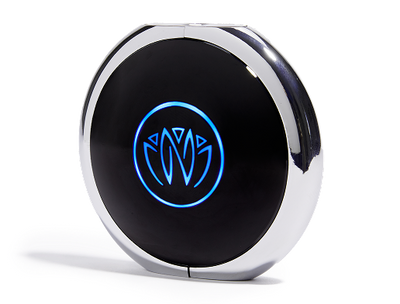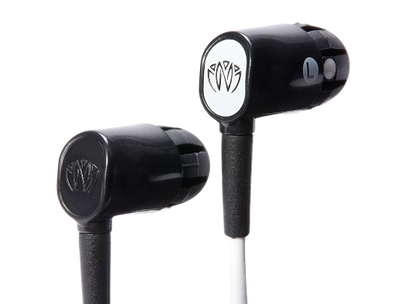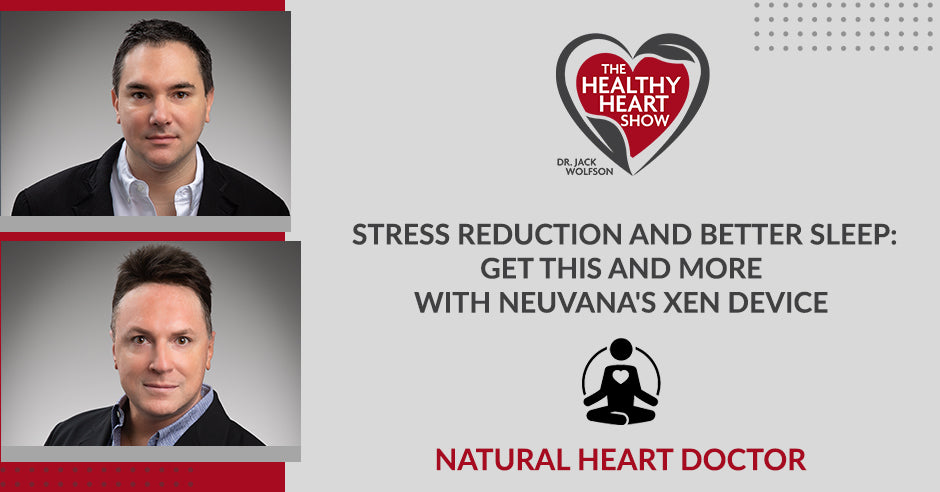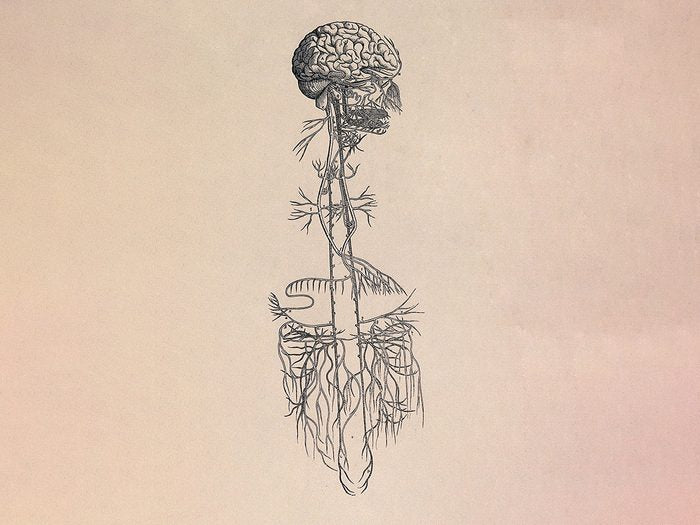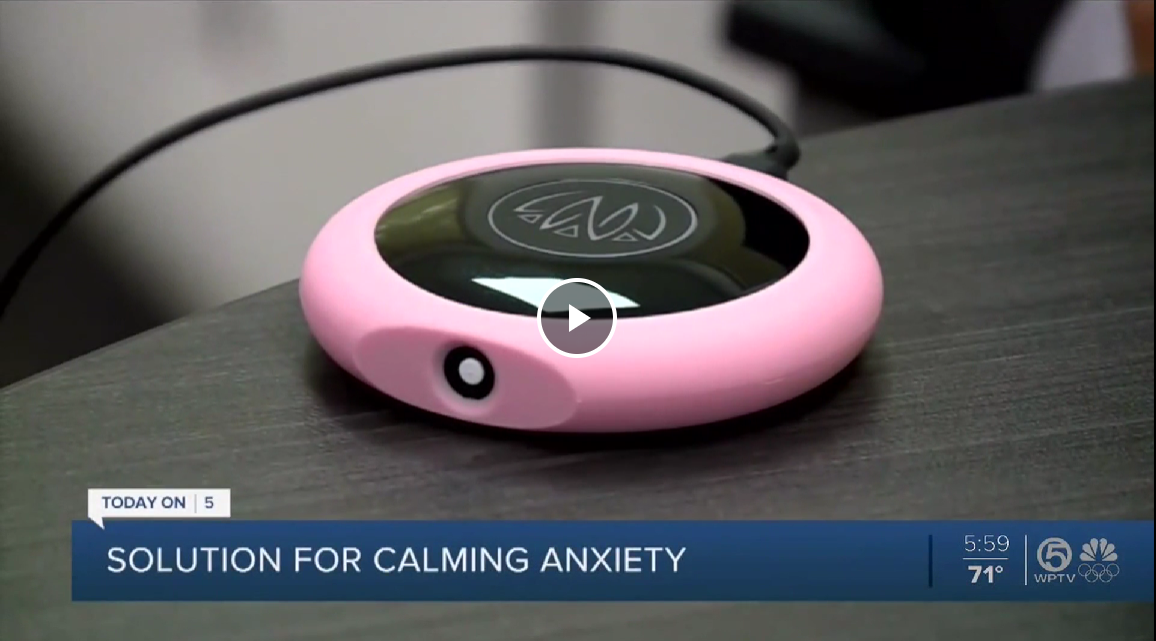Are you struggling to get a good night’s sleep? In this episode, Dr. Daniel Cartledge and Dr. Richard Cartledge discuss Neuvana’s Xen device, which aims to help people reduce stress, improve focus, and sleep better. The impact of vagus nerve stimulation on our health has the potential to reduce (even avoid) future dysfunction. Listen in to find out more about the technology behind Xen and how it can benefit your health.
As always, we have an excellent group of guests here that bring you another perspective into reaching your 100-year heart. We have not one but two brilliant physicians. We have Dr. Daniel Cartledge who practices medicine at the National Pain Institute in Delray Beach, Florida and specializes in Interventional Pain Medicine.
We also have Dr. Richard Cartledge, who has been Chief of Cardiac Surgery of Boca Raton Regional Hospital since 2013. Together, these two brothers started Neuvana, LLC in 2015, which was then chosen as the Best Health And Wellness Device in 2016 at the Consumer Electronics Show in Vegas and patented vagus nerve stimulation device. I can’t wait to know all about it. Welcome to the show, Dr. Daniel and Dr. Richard Cartledge.
Thank you so much for having us.
Let’s start with the basics. Talk a little bit about what is the vagus nerve.
I would talk about the origin of the physiology that the vagus nerve stimulates. Everyone has heard of the fight or flight response when a human being is in a stressful situation. Especially historically, when we were in the bush and there was a threat of some sort, the sympathetic nervous system kicks in. Everyone has a sympathetic nervous system and it is the part of the brain that signals to your entire body that there’s a stressful situation that you need to either fight or dodge.
It increases the heart rate and breathing. It makes you sweat. It gives you this anxious feeling where you can move quickly. It’s generally uncomfortable during those periods of time. This is a normal response that humans have to have. It is functional. If your hand is on a hot stove, you’re going to pull it away. That’s your sympathetic nervous system kicking in and making you feel uncomfortable, but it saves your hand from getting burned.
That’s okay, but when the sympathetic nervous system is constantly on and upregulated, it gives people a sense of constant anxiety. Humans have a counterbalance to the sympathetic nervous system called the parasympathetic nervous system. That’s the nervous system that counteracts the fight or flight response. It gives you a feeling of calmness and well-being. We would all like to be at a beach in South Florida, sipping a cold drink and having warm air blown through your hair. That is the parasympathetic nervous system that kicks in that makes you feel good and comfortable.
The problem is when people do not have a durable parasympathetic system, when the vagus nerve is not getting enough signal, that causes a constant sense of baseline anxiety, which is not functional. That’s the anxiety that comes from anyone who’s chronically ill or they may have a genetic imbalance of those two nervous systems. Besides yoga, taking a vacation and deep breathing, there are not a lot of ways to stimulate the counterbalance to the fight or flight response until now.
You mentioned it increases your heart rate and blood pressure and speeds up your breathing. The vagus nerve has a lot of different responsibilities in the body. What is the vagus nerve responsible for in normal bodily function? We’re not always running from a tiger or a bear now. What’s the point of it now?

The point of it now is to give you a sense of well-being and calmness, which automatically leads to better focus, sleep and mood. Chronic stress is the root of most of the commonly treated disorders, which we’re using pharmacology to treat. People with chronic anxiety benefit greatly from non-invasive vagus nerve stimulation. People that have a fear of getting on an airplane that’s uncomfortable. They don’t want to be uncomfortable for the entire flight. We give the vagus nerve some stimulation and that will automatically change your physiology to feel that calmness, which every organ in the body is affected.
The heart is affected by these two nervous systems. The two poles of the nervous systems that we’re speaking of can make your heart rate go fast or slow. In the lungs, you breathe more slowly and take deeper breaths when you have the vagus nerve stimulated. Your spleen, which is a major immune-modulating organ, is downregulated so that your systemic inflammatory response is driven down. You can imagine the benefits. Your pain threshold increases with vagus nerve stimulation. As a result, you can think and feel better, enhance your mood, have better sleep, and get through those daily stressful events that wind up being dysfunctional.
It’s incredibly widespread. Maybe both of you could expand separately. Coming from a background of cardiology and pain, how is it that you both came to be interested in vagal nerve stimulation?
In my pain management practice, I was using a device that stimulates the auricular. It was transcutaneous. It was using needles under the skin of the ear. It was stimulating the vagus nerve and helping with pain. We tried it for a lot of patients with fibromyalgia, which is a widespread pain syndrome. I brought this up to my brother and we came up with the idea. “This works so well percutaneously. We should try to develop a consumer product that anyone can use that goes through the skin without any needles that do a transcutaneous stimulation.” My brother found an interesting study and was very compelling. It brought us closer to this idea for the consumer product that we have now.
My first contact with vagus nerve stimulation had to do with a small company called Cyberonics in Texas that used cardiac pacemakers. Instead of attaching it to the heart, they attach electrodes to the vagus nerve as it courses through the neck. It was designed to prevent epileptic seizures in patients who weren’t responding to multiple medications. Not only did it work exceptionally well and has statistically significant results in suppressing seizures in epileptics, but the number one side effect after the trappings of surgery, bleeding, infection and those complications were listed, the third one was euphoria.
I thought to myself, “This device that hooks up to this nerve called the vagus nerve can accept electrical signals and make people feel generally well. Why is that?” It was looked at originally as a complication or unwanted side effect. When my brother interfaced with me about this system that uses needles that penetrate through the skin in the ear, I thought to myself, “Maybe there’s another way to approach this that precludes the need for surgery and doesn’t break the skin as needles would.” I bet you thought that there was a way to stimulate that same nerve without an incision and needles. It could be produced at a cost that allows the average person to access this wonderful technology.
The keyword is non-invasive. As you said, all these other side effects of surgery, maybe people would have this aversion to needles in their ears. Are there any ways that we can stimulate the vagal nerve without these maximally invasive procedures?
Yes. There have been a lot of techniques that humans have found that will stimulate the vagus nerve like deep slow breathing. Massage stimulates it. Yoga upregulates the vagus nerve stimulation. These things are great and they’re amazing first-line corrections for the stress response. However, not a lot of people are able to learn and perform yoga routinely enough to have the global benefits from that activity. I certainly don’t have the time or the concentration to do yoga every day.
Deep breathing works, but directly stimulating the nerve electronically is effortless. It allows a lot of people to access vagus nerve stimulation without learning techniques of yoga and so forth, but I still encourage the practice. For those who cannot learn yoga or don’t have the time, deep breathing works well, but it does take some concentration and patience to do it right and do it well.
People with chronic anxiety are the people who benefit greatly from non-invasive vagus nerve stimulation.
What is the quote, “Everybody needs to meditate for one hour a day and if you don’t have time, then you need two.” Who’s got the time?
It’s funny I hear that all the time and it’s hard to pull it off in the real world for everyone.
It’s hard to etch that in when you have things to do. We’ve got this device. Tell us how it works. What’s it called?
It’s called Neuvana and it’s the Xen unit. Neuvana is the company name. Xen is the product. It’s about the size of a hockey puck. At the bottom, there is an attachment for earbuds
The device connects to two earbuds. The one that’s sending the signal is the one with the white cord that goes in your left ear. The Xen device has the ability to deliver the vagus nerve signal while you’re listening to music. If you want to synchronize the signal delivery with music, then you would use the right earbud as well for stereo sound. At baseline, you only need one button to get the stimulation. It feels like mild static electricity in your ear canal. It’s not unpleasant and the effects are profound.
It is an electrical impulse. It is not a sound wave. If you’re not listening to music with that, you would have some electrical sensation, there would be no sound?
There are three options. There are what we call sensations, which are preset waveforms. You can choose those with or without music. The beauty of this is it’s Bluetooth and app-based. As we learn more through studies, we can change the waveforms to new settings. The other option is called Sync mode in which you can sync your Xen device to music. It can be Spotify on your iPhone or any music source. The interesting thing is the signals will sync with your music, which is a cool sensation listening to whatever music you love.
People described it as, “I can feel the music. I can feel the beat.” It brings a new dimension to the music, besides getting the vagal nerve stimulation and all the benefits of that effect. The third mode is what we call Ambient mode, where the Xen device signal will be synced to ambient music. If you’re at a concert or a club with the DJ, it will pick up the ambient music. The sensations are the preset waveforms that you can choose. We have multiple on our app, as well as a Sync mode where you can sync your own music to the device, or the Ambient mode where you can listen to ambient music at concerts, and it will sync to that.
To be clear, the synchronization takes the music and it will track the beat of the music with the signal that you feel. It’s synchronized. It feels like the sensation that you’re getting physically in the ear canal is going with the music. It brings the pleasure of the experience to a whole new level when it’s used to sync with the music. A lot of people at big music festivals will use The Ambient mode where it takes the ambient concert sound and it converts it into a signal so you’re getting the concert and you’re getting the sensation that gives you an additional dimension of the music. Some people can’t listen to music without it.

It changes it to almost a visceral experience. It can be done with any type of music, is that right?
It can be.
Is there any sort of genre or anything that would maybe be more beneficial?
It’s a matter of total electrical current dose. If you have it synced to music and you have a fast-paced song with a powerful refrain, then you’re going to get a lot more net signal over the iteration of the song than if you have a softer song, but it still works and it works great. It may take a little longer to get an effect with a softer song because the signal follows the music beat and tone and will not deliver as much of a dose with a softer song, but it can absolutely be used with softer songs. No question.
The net effect is still parasympathetic stimulation. Overall it gives the sense of calming and well-being even if it’s a 150 beats per minute song.
It gives you that effect despite the cadence of the music. You will feel calm and feel a general sense of enhanced well-being, and over time the effects sustain even in between sessions.
How might you suggest that people use the Xen product? Is this something that you would do daily or before bed? How do you suggest that it’s best used?
We recommend fifteen minutes twice a day. You mentioned the timing of this. The key points that we’ve studied for the effects of the Xen device would be helping them with anxiety, improving mood, helping with sleep, and also helping with focus. It takes out the background noise of life when you’re sitting down to do a task. Even something mundane like doing your taxes.
People who are using it for insomnia are going to use it right before they go to sleep or right before they go to bed, and that gets incredible results. We hear stories of people that have gotten off Ambien and different sleeping medications by using this device. It has a profound effect on insomnia for so many people. Also for destressing and it’s stimulating. The parasympathetic activity is going to bring a sense of calm to you. A lot of people will do it after they come home from work and they had a stressful day or not, just to unwind. We have people telling us it takes the place of that martini after work or that glass of wine. People like that.
Your pain threshold increases with vagus nerve stimulation.
You were asking about the sessions or the recommended usage. The “induction therapy” is twice a day, fifteen minutes sessions for two weeks. It can be done anytime. It can be used before bed or during a meal. After those two weeks, it resets your sympathetic and parasympathetic nervous system where your vagus nerve is upregulated even in the absence of stimulation. It’s not a therapy that only has an effect during the session, but it has an enduring effect, especially after two weeks. We recommend two fifteen-minute sessions daily for two weeks and then as needed after that. It’s been profoundly successful in treating people’s baseline anxieties.
It sounds like working out. If you do one bicep curl once a month, you’re not going to have any improvement. It’s tonifying your parasympathetic tone so that over time, you accumulate and then you’re like, “I got a little bit more of a muscle tone without even holding a weight.”
You also get a faster response to the effect because of neuroplasticity. People who have been using Xen for a more extended period of time are going to feel the effects much faster. It’s pretty immediate for people that have been using it on a regular basis for an extended period of time. You don’t get tolerant to the effect. It’s the opposite. It works faster and it’s more effective because of neuro-plasticity as the body gets more used to having this VNS, Vagus Nerve Stimulation, on a regular basis.
The effects have been profoundly researched. We’ve done our own research with our device. There has been research by independently using our device, and then there are a lot of labs and universities that are constantly testing vagus nerve stimulation in the fashion that we deliver it for various conditions. It has been shown to treat very well multiple conditions including insomnia, dysthymic mood and general anxiety.
There’s a lot of data on how VNS enhances your focus. That’s a common use of the device when you have to do a mundane task that you’re not interested in doing, but you know you have to do it and you have to focus on it like doing your tax preparation. It’s onerous for most people. Having your vagus nerve upregulated and upregulating your parasympathetic nervous system blocks unwanted thoughts and allows you to control much better the focus at the moment, instead of having rogue thoughts popping into your head and diverting you. It gives you the ability to control your focus much better than without it.
These are foundational things like improved sleep, mood and focus. If we go further, maybe you haven’t even studied these with this device. If we have anxiety, all of the things that are downstream of that increased blood pressure, atrial fibrillation, and all of these downstream symptoms of not addressing these foundational pieces like poor sleep and anxiety. We can start improving at its foundation within that vagal nerve.
We think of a number of disease processes that are aggravated with stress and a tough lifestyle from cardiac disease to inflammation in the body. Chronic pain can be directly related to stress as well. There are limitless possibilities with this device.
If you’re talking inflammation, that can go in any disease state.
There are a lot of rheumatologic studies on the effect of vagal nerve stimulation on the spleen and all these cytokine releases as well. We haven’t necessarily tested our device for it, but we plan on doing that in the future.

These have been studied by universities around the world in the effects of vagus nerve stimulation in the same method of delivery that we use for our Xen device. People always ask us, “How could it be that it does all these things. It can help focus and enhance your sleep and mood?” The litany of things it does goes on and on. When you think about it, all of these conditions that humans battle with on a daily basis are almost all related to your stress level.
Reducing stress is the major factor here that blocks all the things that are bad from your fight and flight response when you have chronically low vagus nerve tone. It does make sense when you take a moment and think about how stress reduction will improve a host of physiologic and psychological parameters by that one function of profound stress reduction.
It’s head to toe. It’s a cranial nerve that we’re addressing. As you said, improved focus in all of this, but then I would imagine even things like digestion can be improved because we know that our stressors, anxieties and everything impacts our gut. We have a gut feeling about something.
You’re sympathetic or your fight or flight response reaches havoc on your GI system. It’s a very good point. When you’re nervous, a lot of times, your belly hurts because blood flow is diverted away from your intestines when you’re stressed so that you can have more blood flow to your muscles, which is functional when you’re being chased by a beast. It’s not functional when it’s chronic. People that have chronic illnesses maintain a level of stress beyond the average person. It becomes a chronic fight or flight response that doesn’t go away. Those are the people that benefit most from vagus nerve stimulation.
You’re making a great point, Lauren. Even irritable bowel syndrome seems to be directly linked to stress.
There have been studies showing the benefit of vagus nerve stimulation in the irritable bowel syndrome world.
I could only imagine the benefits are endless. Taking something that’s found frequently in the literature that is being studied, you’ve made this accessible for people to buy and have in their homes. Where can people find this? How do people purchase and get this into their possession?
They can buy it online on our website. It’s NeuvanaLife.com. We’re also on social media @NeuvanaLife and right now, we’re doing direct online sales for this.
You can’t get it on Amazon. It’s exclusively through our website.
The benefits of good sleep are just endless.
There is a very generous code. If you go to NeuvanaLife.com and type in HEALTHY10, you can get 10% off of a Xen or one of the bundles. That is awesome so I would grab that up. It’s such a great device. Honestly, it would be an excellent gift. I don’t know that there’s anybody that could not benefit from this. On that note, are there any negative side effects or somebody that shouldn’t use this?
One of the contraindications is people that have a pacemaker or defibrillator that are sensing electrical signals from the heartbeat. That’s the main contraindication against it.
Also, people with a seizure disorder and pregnant women as well.
Otherwise, is it very relatively safe?
It’s extremely safe, and don’t forget we’re on a pretty far down generation on this. We have data from our early devices that were not nearly as refined, and thousands of people have had Xen or the original units that work in a very similar fashion. We have not had any reports of a serious complication beyond local ear canal inflammation. That’s pretty much it as far as contraindications.
I cannot wait to get my hands on a Xen device. If everybody would all go to NeuvanaLife.com, we’ve got HEALTHY10 for 10% off. Follow them on Instagram and Facebook, all @NeuvanaLife, and learn more. See all of the benefits that can be provided to yourself, your family and your loved ones. Flex your vagus nerve and get that vagal nerve toned up. Thank you again so much for joining us.
Thank you so much for having us.
We appreciate it, Lauren. This was fantastic.
Thank you for reading. We will catch you next time.
Important Links
- National Pain Institute
- Boca Raton Regional Hospital
- Neuvana
- @NeuvanaLife – Instagram
- Facebook – Neuvana Life
- @NeuvanaLife – Twitter
- https://www.LinkedIn.com/company/neuvana/
About Dr. Daniel Cartledge
Daniel Cartledge, MD along with his brother, Richard Cartledge, MD, started Neuvana, LLC, in 2015. He practices medicine at the National Pain Institute in Delray Beach, Florida, and specializes in interventional pain medicine. He is an expert in neuro-electrical therapies to treat patients with chronic pain. He serves as Medical Director of a therapeutic infusion clinic and is on the advisory board of two nutraceutical companies. Dr. Cartledge is double-board certified in pain management and physical medicine & rehabilitation. Dr. Cartledge holds an undergraduate degree from Lehigh University and a medical degree from the University of Saint Eustatius School of Medicine.
About Dr. Richard Cartledge
Richard Cartledge, MD, FACS invented and patented the Neuvana vagus nerve stimulation device and started Neuvana, LLC, in 2015. He has over 20 years’ experience inventing, designing, and manufacturing cutting-edge medical devices with more than 100 issued and pending patents. Dr. Cartledge has been Chief of Cardiac Surgery of Boca Raton Regional Hospital since 2013. He is fellowship trained in cardiovascular surgery from New York Hospital/Weill Cornell Medical Center and in thoracic surgical oncology from Memorial Sloan Kettering. Dr. Cartledge holds a BS in Mechanical Engineering from Lehigh University and a medical degree from the Medical College of Pennsylvania.

